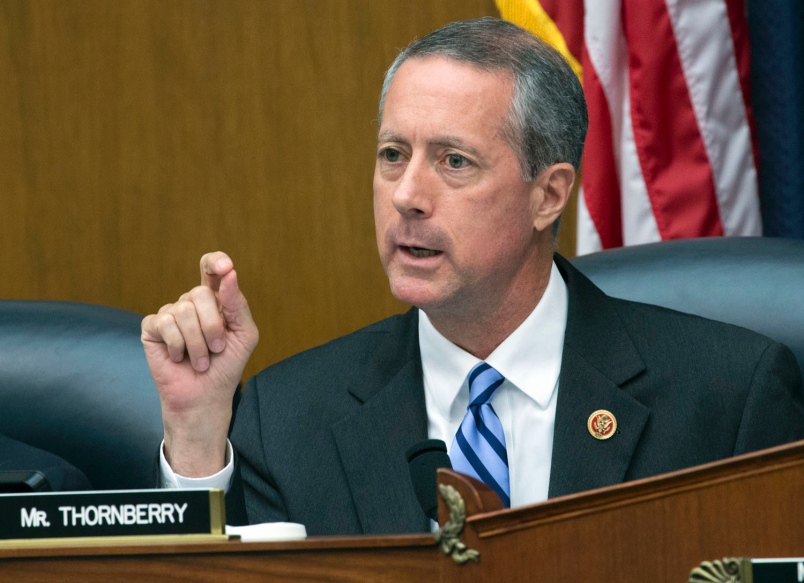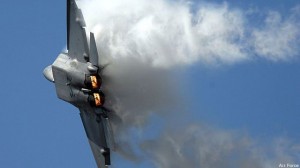Dems May Refuse To Support HASC NDAA: Our Markup Preview
Posted on

Rep. Mac Thornberry
WASHINGTON: Mac Thornberry, chairman of the House Armed Services Committee, wants to boost funding for readiness and modernization and he’s using a budgeting gimmick in the defense policy bill to do it that is prompting much head shaking. (A similar gimmick led to a short-lived presidential veto last year).
Colin’s bet is that, should the Senate follow Thornberry’s example of funding only seven months of the Overseas Contingency Operations operational needs to move that money to other places, Democrats will refuse to support the bill. It may begin with House Democrats. Already, we’ve got Rep. Adam Smith, no fanatic partisan he, saying he is “undecided” about whether to support the bill because of the GOP budget bobbling.
“The approach to funding that has been adopted in the Chairman’s mark is incredibly problematic. First, it cuts funding for Overseas Contingency Operations so that we will run out of money for them halfway through the year, while we still have troops in Iraq and Afghanistan, an approach that puts our forces on the road to a fiscal cliff,” Smith said in a statement less than an hour after I called his office to see if the Democrats would support Thornberry’s approach or not.
In the face of the possibility that sequestration will rear its messy and ugly head again, Smith is especially cautious. “This strategy is essentially based on hope. They are hoping more money will magically appear to solve this problem—and hope is not a strategy. Because the Republican caucus doesn’t seem to have any appetite to lift the sequestration budget caps that originally created this problem, this plan will paint the Defense Department into a very small corner indeed,” he said.
Lest you think this is just about some cranky Democrats opposing something done by wise Republicans, here’s what Justin Johnson, a certified former Republican congressional aide, says in a posting on the Heritage Foundation’s Daily Signal website:
“The biggest controversy (in the National Defense Authorization Act) may be the underlying budget proposal. The chairman of the House Committee on Armed Services, Rep. Mac Thornberry, R-Texas, has put forward a bill that only provides funding for operations in Afghanistan and Iraq through the first seven months of the fiscal year and uses the remaining money to support increases to the size and readiness of the military.
“While the military absolutely needs a bigger budget, this maneuver is problematic and may produce significant debate,” Johnson says.
Here are a couple of the top issues we expect to generate discussion at the markup:
A big part of Thornberry’s $18 billion add goes to the long budgetarily beleaguered Army. There’s general consensus that the Army needs these plus-ups, but given the service’s history as a fiscal punching bag, which of these expensive measures will survive when the time comes for compromise? The plus-ups come in two main categories, people and helicopters:
- Endstrength: $2.8 billion to add more soldiers to all components of the Army. The move reverses years of cuts and bringing the regular active duty force to 480,000, the Army Reserve to 205,000, and (politically the most popular) the Army National Guard to 350,000. That’s over $1.4 billion in personnel costs, another $967 million in Operations & Maintenance (O&M) costs, and at least $120 million in related procurements, such as extra ammunition, scattered throughout the bill. There’s also $102 million for training, exercises, and Professional Military Education (PME) to improve the overall quality of the force (not counting aviation training, below). The other services gain personnel too, but nothing on this scale.
- Aviation: $1.1 billion to keep AH-64 Apache helicopters in the National Guard and compensate for deep cuts to Army aviation procurement. That’s over $1 billion to buy or upgrade helicopters and drones, over $100 million in O&M to support the larger force, and $5.4 million to train the needed pilots. There’s also $68 million to increase aviation training overall.

F-22
The Army and all the services also benefit from a 19 percent increase to the mundane but necessary work of facilities restoration, modernization and sustainment. Maintaining and replacing aging buildings has been a big billpayer in recent years, leading to horrific cases of deferred maintenance. Fixing that backlog is correspondingly expensive: over $1 billion for the Army alone (counting regulars, reserves, and Guard), plus $667.5 million for the Air Force, $542.5 million for the Navy, and $148.4 million for the Marine Corps. There’ll be a great temptation to defer maintenance just a little more to make ends meet.
The House bill adds $300 million for ballistic missile defense, for everything from booster improvements on the Ground-Based Interceptor to command-and-control upgrades and prep work on East Coast and Hawaiian radar sites. While missile defense has become much more bipartisan than it once was, it remains a Reagan legacy that Republicans are far more passionate about than Democrats.
Finally, Rep. Randy Forbes’ push to get the Pentagon to restart the F-22 line — which Pentagon acquisition chief Frank Kendall said today would be very expensive — will probably attract some discussion.
Sydney and I will be covering the markup through the day. If you know things you think we should know, feel free to click on the Contact Us link at the top of our page.
Subscribe to our newsletter
Promotions, new products and sales. Directly to your inbox.
